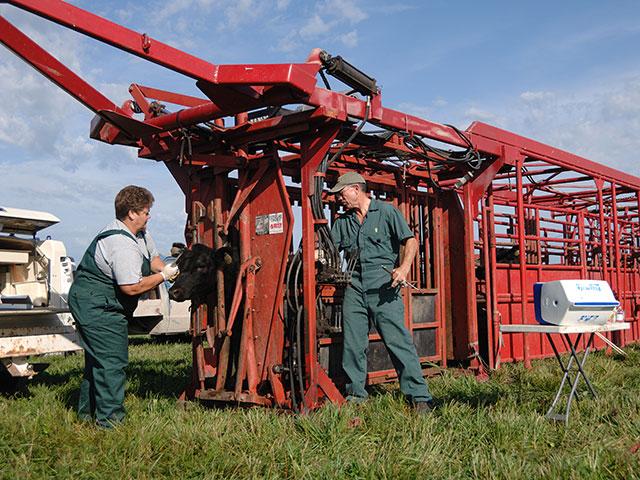Ask the Vet
Critically Low Numbers of Large-Animal Vets
READER QUESTION:
I read your recent article about dehorning, and while I'm not advocating the use of banding, I have had good success with the method. I did not have any anesthetics, and the cows showed some discomfort for about 24 hours. It took about 30 days for the horns to drop off, and we had no bleeding or other problems. We did it when the weather was cool, so flies were not a concern. But your comments brought another issue to my mind, which is how do I get an anesthetic? You see, we have no large animal vets in our county, and that can leave producers like myself doing jobs we might otherwise let a vet handle.
DR. MCMILLAN'S ANSWER:
I am glad to hear a positive report on banding. Maybe there is a place for it, and there may just be a learning curve to get to where you are. Maybe other readers will also respond with success stories and tips on how to make it work. The old adage is that "Experience is the best teacher," but I would advise anyone attempting this to work with their veterinarian or someone who has had experience and success with the procedure.
You bring up an important issue for our industry as a whole. The loss of large-animal veterinarians is very concerning to me, our profession and hopefully to everyone in the equine and food animal industries. All pain medications, most antibiotics, many other drugs and feed additives require that the producer have a valid Veterinarian Client Patient Relationship (VCPR) for the veterinarian to sell the product or issue a prescription or Veterinary Feed Directive. This trend will only accelerate in the coming years.
P[L1] D[0x0] M[300x250] OOP[F] ADUNIT[] T[]
The FDA in the Code of Federal Regulations Title 21 (CFR 21) clearly defines the elements of a VCPR as follows:
-- The veterinarian assumes responsibility for the animal's health.
-- The client (owner) agrees to comply with the veterinarian's instructions.
-- The veterinarian has sufficient knowledge of the animal(s) to make a general diagnosis.
-- The veterinarian assumes responsibility for follow-up care, including adverse reactions and/or treatment failures.
-- The veterinarian maintains patient records.
Veterinarians approach pain control very differently, but there is no question that it is not just the right thing to do for the welfare of the animals, but data is very clear that pain control pays for itself, making the producer money in increased production.
Local anesthetics like lidocaine are very effective in many otherwise painful procedures, but there is a learning curve on how to use them appropriately. Nonsteroidal anti-inflammatory drugs (NSAIDs) provide longer-term pain relief. Drugs like flunixin (Banamine) come as an injection and a topical application. Meloxicam is an economical and very effective pain reliever but is not approved for use in cattle. It can be prescribed by your veterinarian for many conditions based on an exclusion made by the FDA. In every case, these drugs require a prescription, and for a veterinarian to issue a prescription, there must be a VCPR.
Thank you for your comments, and good luck in finding a veterinarian to work with you.
**
Editor's Note:
Please contact your veterinarian with questions pertaining to the health of your herd or other animals. Every operation is unique, and the information in this column does not pertain to all situations. This is not intended as medical advice but is purely for informational purposes.
Write Dr. Ken McMillan at Ask the Vet, 2204 Lakeshore Dr., Suite 415, Birmingham, AL 35209, or email vet@progressivefarmer.com.
(c) Copyright 2022 DTN, LLC. All rights reserved.






